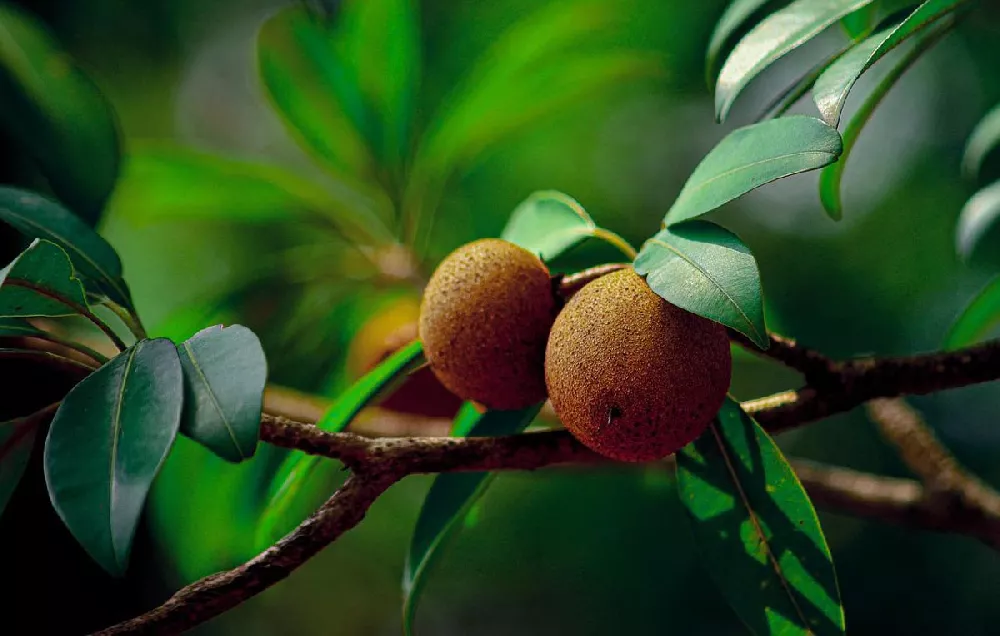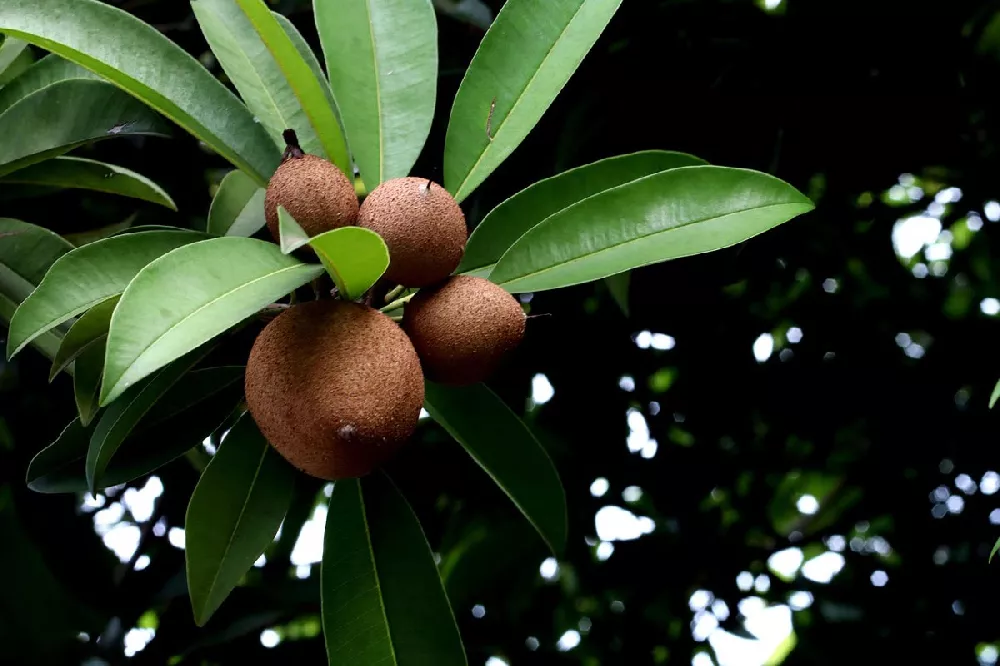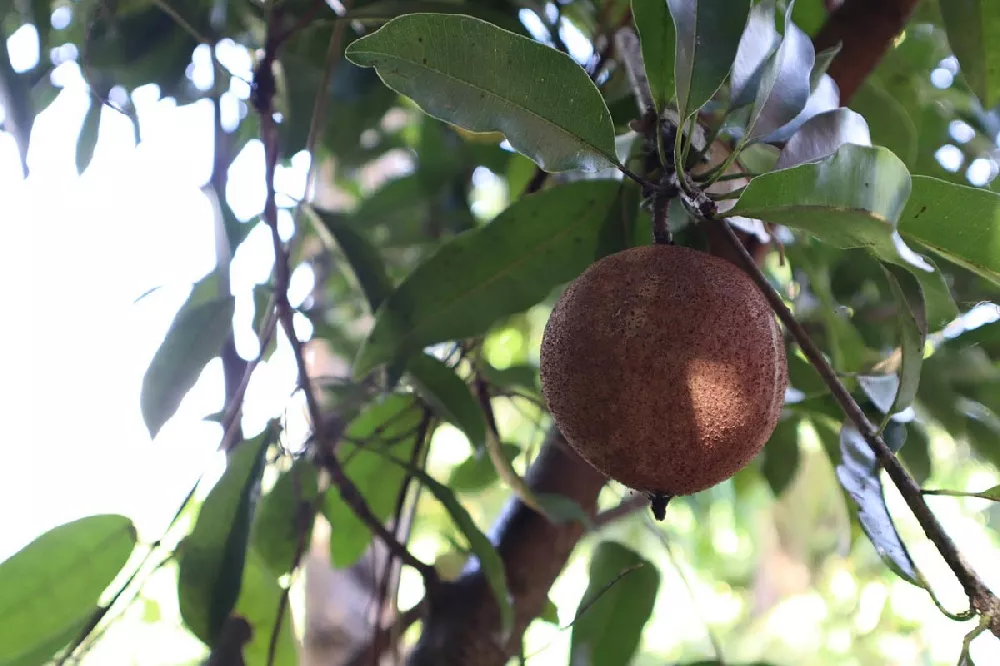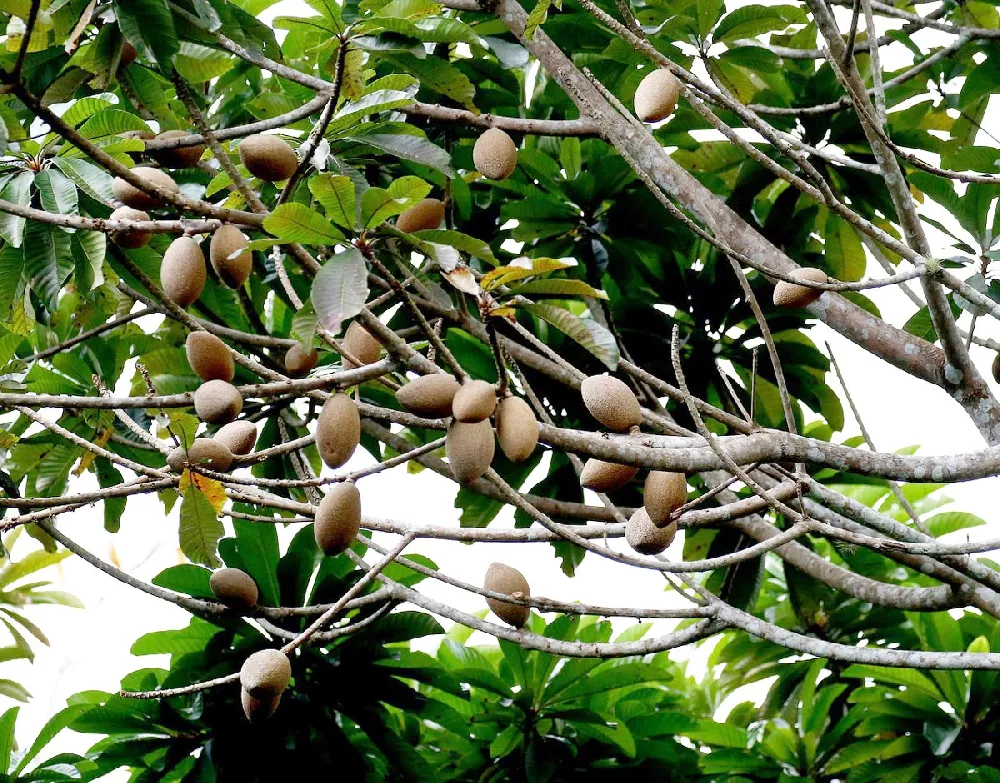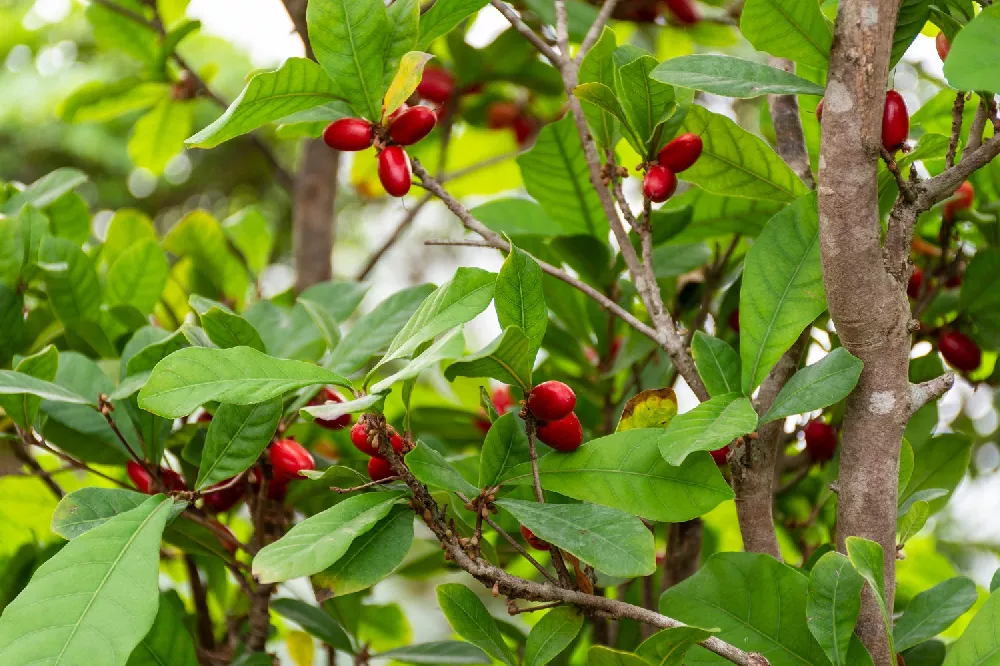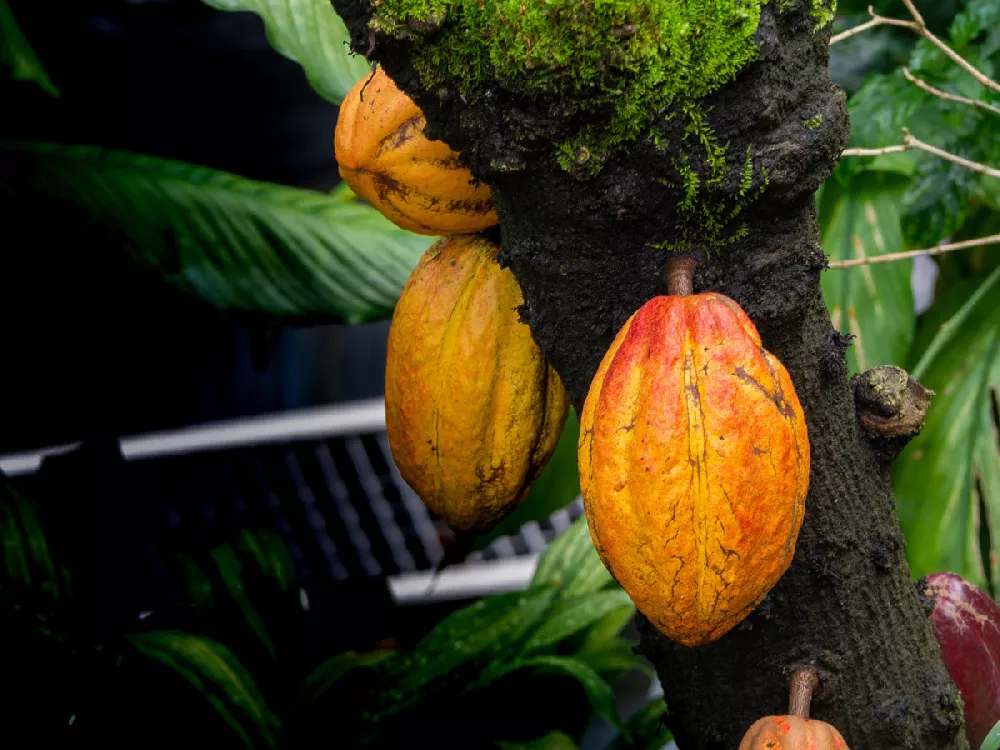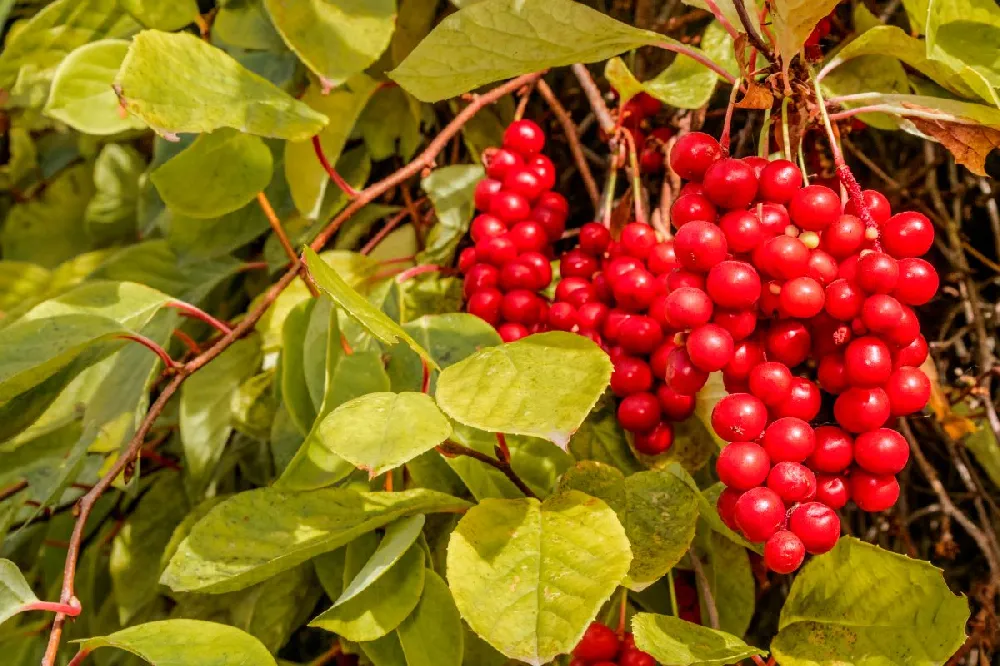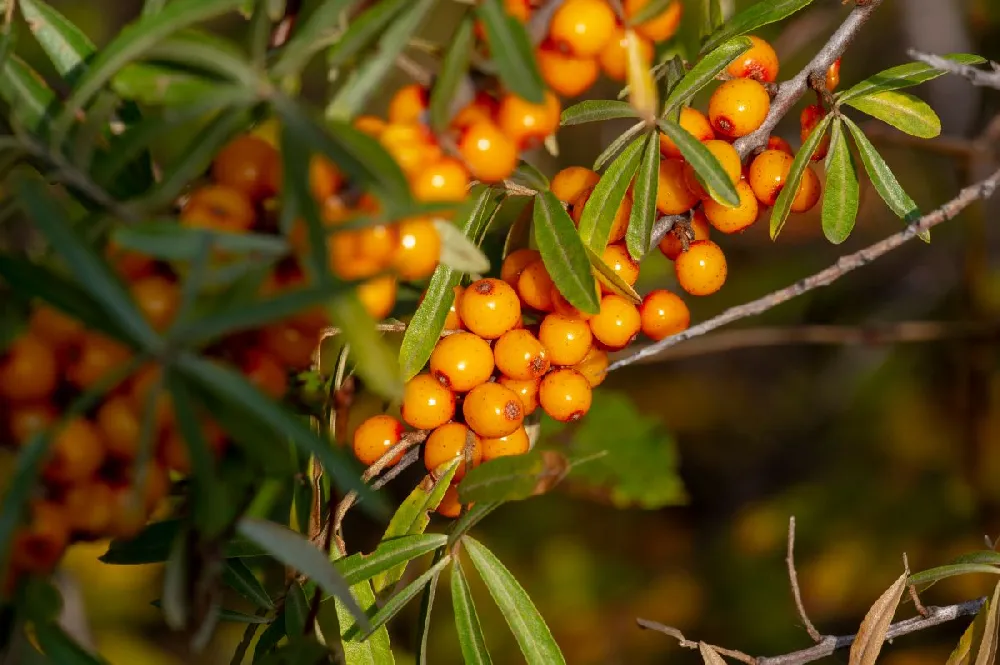- Home >
- Evergreen Trees >
- Sapodilla Tree
Sapodilla Tree for Sale - Buying & Growing Guide
- Ships in 1-2 days
- 1-Year Warranty Eligible
- Pots or accessories are not included unless specified in the product options.
Shipping Details:
Once your order is shipped, you’ll receive an email with a tracking number and estimated delivery date. Most orders ship immediately, but some items are seasonal and may only ship in spring or fall. These products are noted on the website.
The sapodilla tree isn't as well-known in the U.S. as it should be. This handsome evergreen, which can grow to a stately height of 30 to 50 feet, has attractive, glossy, dark green leaves; small, bell-shaped flowers; and a tasty fruit that is the size and shape of a large brown egg. Sapodilla fruit lovers say that the fruit tastes like a pear that's been dipped in brown sugar. It can be eaten off the tree or used in cooking, and a single serving has more than half your daily requirement for vitamin C, 10% of your iron requirements, and vitamins such as folate and niacin. Here are a few more reasons to invite a sapodilla tree to your backyard:
- It is salt-resistant, making it a good choice for seaside landscapes.
- Fragrant flowers bloom several times each year.
- The bark of mature trees is appealingly mottled and flaked, giving it an interesting texture.
Plant Care
Sunlight

The sapodilla tree can handle partial sun, but does best in full sun, 6 or more hours a day of direct sunlight a day.
Watering
Water an established tree regularly, giving it an inch of water a week; newly planted trees need more.
Fertilizing

Fertilize in spring with a product designed for tropical fruit trees, before new growth begins.
Planting and Care
Planting instructions
Site your sapodilla tree sapling where it will get adequate sunlight, in soil that drains well. Unpot the tree and tease out any encircling roots, which can eventually girdle the tree and kill it. Dig a hole that’s as deep as the root ball and twice as wide. Throw in a few handfuls of well-rotted manure or compost and place the tree on top of it. Holding it steady and upright, fill in around the tree with good quality topsoil, tamping down as you go to eliminate air pockets. Water thoroughly. Add a 2- to 3-inch layer of an organic mulch, such as bark chips, around the root zone, being careful that it does not touch the trunk itself.
Watering and nutrients
Water newly planted trees every few days for the first month or so, until you see new growth, and then taper back to twice a week for the rest of the first growing season. A mature tree will only need supplemental watering during times of extreme heat or drought. Feed your tree with a general, slow-release fertilizer made for tropical fruit trees, such as a 5-5-5 formula. Young plants need more fertilizer than mature trees, so taper back on fertilizing when the tree is about 4 to 5 years old.
Pollination
Although sapodilla trees are self-fertile, you will reap a much larger harvest if you have two or more trees planted near each other. The trees have small flowers, which are pollinated by insects.
Pruning
Your sapodilla tree needs little pruning, and if left to its own devices, will form a full, thick canopy that may spread as much as 20 to 30 feet. When the tree is young, you can lightly prune it to shape that canopy. It’s also important to monitor your tree for broken, diseased, or dead branches, which should be pruned out whenever you see them. If you are growing your sapodilla tree for its fruit, also watch out for branches that start to bend under the weight of the ripening fruits. In this case, prune out a few of the fruits on the branch to avoid it breaking.
Pests, diseases, and animals
Although generally pest- and disease-free, sapodilla trees may see infestation by scale insects, and Caribbean fruit flies or phycitis fruit borers may feed on the fruit. Healthy plants should be fine despite minor insect pressure, but severe infestations may require the use of an insecticide. The only disease that you might see is leaf rust, which can be handled with an organic copper fungicide.
Harvesting
Sapodilla fruits ripen anywhere from 4 to 10 months after the flowers drop, depending on climate and other conditions. Fruit may thus appear any time of year. In Florida, they are most common during the summer months, from May to September. It can be difficult to tell when Sapodilla fruit is ripe. One way is to lightly scratch the surface of a fruit. If the skin under the surface is green, it’s not yet ripe. You’re looking for the under-skin to be a light tan or brown color. The texture of a ripe fruit is also smoother than that of an unripe one.
Achieving maximum results
Sapodilla trees are native to Central America and the Caribbean, and thus they thrive in warm climates, roughly corresponding to USDA hardiness zones 9 to 11. What if you live north of that? Happily, the trees take well to container growing, and although they reach a height of 30 to 50 feet when planted outdoors, can be kept to a height of 5 to 6 feet when grown in containers. Choose a container for your sapodilla tree that is about twice the size of the root ball, and use a good-quality potting mix when you plant it. It will grow well on a patio or in a backyard until the temperatures drop to 30 degrees Fahrenheit, at which point you should bring it inside and place it by a sunny window. Note that it may need additional watering then, especially if your home is dry in the winter. You can also help it thrive by wiping down the leaves with a damp cloth every month or so and misting the leaves regularly.
FAQs
How long will it take my sapodilla tree to bear fruit?
Sapodilla trees are fairly slow growers compared to other fruit trees, so your sapodilla tree may take three or more years before you are able to reap a harvest. Flowering may occur any time after the first two or three years, but the tree at that point may still be too small to sustain the fruiting process. A full harvest is attainable after the tree is roughly 6 or 7 years old.
Will my container-grown sapodilla tree yield fruit?
A healthy, container-grown tree may yield a small harvest — more so if you have two or more trees near each other. You can help them along by hand-pollinating the flowers, using a small paintbrush to move the pollen from one flower to the next.
Where is it best to plant a sapodilla tree?
Sapodilla trees can be an attractive element in any landscape, but they are large trees, reaching up to 50 feet with a 30 foot spread. If your garden is tiny, your best bet is to grow your sapodilla tree in a container so that the size can be constrained. Larger gardens, however, may benefit from a sapodilla planted as a specimen tree and surrounded with smaller plantings that can take partial shade, such as hostas and astilbes. Since sapodilla trees are salt-resistant, they are also an effective planting near beach settings or along a seashore.
Compare Similar Products
Customer Reviews
 Sapodilla tree
Sapodilla treeWhen I ordered it said 2-3ft tree. I did not expect less than 2ft tree. Otherwise, tree intact and looked healthy when it got delivered.
 Tree still healthy
Tree still healthyPlant still looking healthy and I hope it will keep it that way. I will put more reviews later. Give it a few months right now it's too soon to tell.
You can't add more Product Name - Product size to the cart.
OK